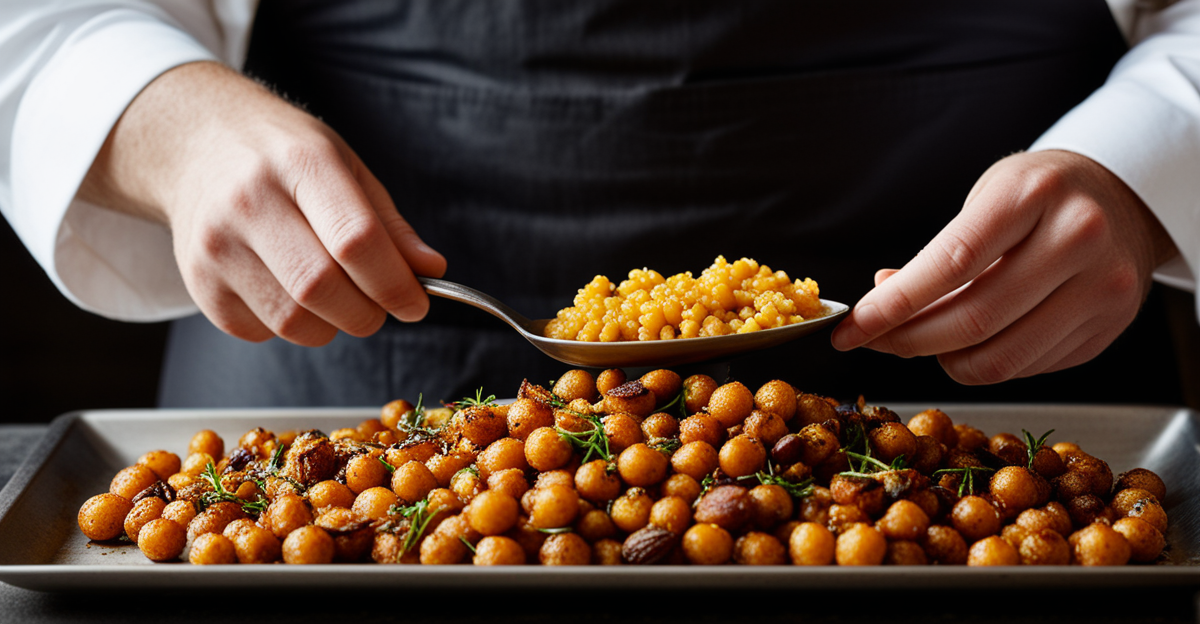Achieving Fusion in UK Cooking: Principles and Approaches
Blending fusion cuisine with traditional UK flavors revolves around core principles that respect heritage while encouraging innovation. At its heart, fusion cooking in the UK respects the rich history of British culinary traditions but actively seeks to incorporate modern British cooking techniques and international influences. This requires a deep understanding of British food heritage—its regional diversity, seasonal ingredients, and classic preparations—to ensure that new flavors enhance rather than overwhelm.
British food is inherently adaptable. Its simplicity and focus on quality ingredients allow cooks to experiment confidently, introducing spices, herbs, and textures from diverse cuisines. For example, integrating Asian spices or Mediterranean herbs into a traditional British stew can revitalize familiar dishes. This adaptability is crucial for successful fusion because it creates a bridge between classic tastes and contemporary innovation.
Additional reading : What are the essential steps for a homemade steak and kidney pie?
Contemporary approaches often involve elevating classic recipes through techniques like sous-vide cooking, flavor layering, or the use of novel pairings. Chefs may reinterpret a beloved dish by adjusting seasonings, incorporating unexpected ingredients, or altering presentation to suit modern palates. Such approaches make fusion cooking not only about mixing cuisines but deepening the culinary experience by enhancing texture, aroma, and visual appeal.
To summarize, achieving fusion within modern British cooking embraces both respect for traditional UK flavors and openness to experimentation. This balance is the foundation for crafting dishes that celebrate Britain’s culinary past while inviting exciting new possibilities.
In the same genre : What are the essential steps for making a delicious toad in the hole?
Specific Examples of Fusion Recipes
Exploring fusion recipes through the lens of modern British dishes reveals exciting ways to reinvent classic flavors. A prime example is the reinterpretation of the traditional Sunday roast, enhanced by Asian-inspired marinades or Mediterranean herb infusions. This approach respects the essence of the dish while introducing vibrant new tastes. Similarly, popular UK comfort foods like fish and chips can be refreshed with global influences by incorporating tempura-style batter or serving with exotic dipping sauces, bridging familiar textures with unconventional flavors.
A detailed case is a shepherd’s pie enriched with Indian spices such as garam masala or turmeric, replacing the usual meat mixture to deliver a complex flavor profile. The layering of mashed potatoes atop a curried filling exemplifies how fusion can honor traditional UK flavors yet highlight global tastes. These variations illustrate how thoughtfully selected ingredients can enhance rather than overshadow classic recipes.
When considering plating and pairings, fusion recipes benefit from harmonious combinations that balance taste and visual appeal. For instance, a modern British dish featuring smoked salmon might be paired with wasabi-infused crème fraîche and microherbs, blending Nordic and Asian elements. This kind of pairing introduces a refreshing complexity without compromising the dish’s core identity.
In summary, fusion recipes in UK cooking thrive by creatively rethinking traditional dishes, combining global ingredients thoughtfully, and balancing textures and flavors. This offers an accessible way to experience new tastes while appreciating the deep roots of British culinary tradition.
Tips for Ingredient Substitutions and Creative Combinations
Blending traditional UK flavors with fusion cuisine often requires thoughtful ingredient substitutions to maintain balance and authenticity. A key principle is selecting global ingredients that complement rather than clash with classic British components. For example, replacing regular potatoes with sweet potatoes or incorporating exotic spices like smoked paprika can transform a dish while preserving its familiar appeal.
When considering easy swaps, it’s helpful to view ingredients by their role—texture, flavor, or aroma—and find suitable international counterparts. For instance, using coconut milk as a cream substitute can add richness and subtle sweetness to sauces without overpowering the dish. Similarly, replacing standard Worcestershire sauce with tamarind paste introduces a tangy depth reflective of Asian influences, enhancing the overall flavor profile without losing the essence of modern British cooking.
Balancing flavors and textures is crucial for creative combinations. Pairing a mildly spiced curry filling with buttery mashed potatoes in a fusion recipe illustrates how layering contrasts can elevate a dish. Thoughtful integration ensures that each element shines individually and also contributes to a harmonious whole. Experimenting with textural contrasts—like combining crispy tempura elements with soft traditional bases—creates engaging mouthfeel and visual interest.
In summary, successful ingredient substitutions in UK fusion cuisine revolve around respecting the original dish’s core while creatively incorporating global flavors. Understanding the roles ingredients play lets cooks make informed swaps, supporting balanced, innovative outcomes that celebrate both heritage and experimentation.
Presentation and Serving Inspiration
Achieving an appealing modern plating style is vital when showcasing fusion cuisine in UK cooking. Thoughtful visual presentation elevates dishes by emphasizing the harmony between traditional UK flavors and international influences. Chefs often employ clean lines, contrasting colors, and minimalist arrangements to draw attention to key ingredients and textures. This approach allows both familiar and novel elements in the dish to shine equally.
Incorporating garnishes and accompaniments enhances the UK food presentation by adding layers of flavor and visual interest. Microherbs, edible flowers, and vibrant sauces provide fresh bursts of color and subtle complements to complex fusion recipes. For example, a drizzle of spiced oil or a sprinkle of toasted seeds can enhance texture while reinforcing the fusion concept.
Plating techniques that highlight fusion elements focus on balance and thoughtful spacing. Arranging components to create contrast—such as crisp tempura alongside creamy mash—engages the senses and prepares diners for a dynamic tasting experience. Serving portions in layered or deconstructed styles can also help showcase the fusion nature by letting each element’s unique character be admired before blending flavors.
Ultimately, combining modern plating with traditional and global flavors offers a powerful way to communicate the creativity behind fusion cuisine. This harmony of visual appeal and taste invites diners to explore UK dishes reinvented through cultural collaboration, enriching the overall culinary experience.
Chef Insights and Cultural Perspectives
Chefs experienced in fusion cuisine emphasize the importance of balancing traditional UK flavors with respect for the diverse cultures that inspire their creations. According to British culinary experts, authenticity remains key; it’s essential to understand the origins and significance of ingredients and techniques before integrating them into modern British cooking. This depth of knowledge prevents superficial blending and fosters dishes that genuinely honor both traditions involved.
One common piece of chef advice is to approach fusion as a dialogue rather than a takeover. This means thoughtfully combining elements rather than simply juxtaposing flavors for novelty. For example, carefully incorporating spices into a classic British base respects the dish’s identity while introducing new dimensions. British chefs often recommend experimenting slowly, testing ingredient pairings, and adjusting seasoning gradually to find a harmonious balance.
Cultural fusion insights highlight that fusion cooking thrives when creativity meets cultural sensitivity. Embracing stories behind ingredients enriches the culinary process and deepens connections with diners who appreciate both heritage and innovation. Chefs also stress the importance of continuous learning, suggesting that engaging with diverse communities and culinary traditions helps refine fusion approaches and inspire fresh ideas.
In summary, expert guidance on fusion cuisine within the UK culinary scene encourages respectful experimentation rooted in tradition. This mindset ensures that fusion dishes remain authentic, inventive, and meaningful—qualities that define successful modern British cooking today.
Achieving Fusion in UK Cooking: Principles and Approaches
Blending fusion cuisine with traditional UK flavors hinges on several core principles rooted in respect and creativity. At its foundation, successful fusion requires a deep understanding of British food heritage, including its regional nuances and seasonal ingredients. This knowledge allows cooks to introduce global influences that enhance rather than overshadow familiar tastes. British cuisine’s inherent adaptability supports this by embracing quality ingredients and straightforward preparations, making it a flexible canvas for innovation.
The key to melding modern British cooking with fusion lies in balancing authenticity and experimentation. Rather than mere combination, it is about evolving classic recipes thoughtfully. For example, techniques such as flavor layering and subtle seasoning adjustments can transform traditional dishes without losing their identity. This approach encourages chefs to view fusion as a dialogue between past and present, integrating international elements that complement UK culinary traditions.
Contemporary methods to elevate classic recipes often include adopting novel cooking techniques like sous-vide or exploring unconventional ingredient pairings that highlight texture and aroma. Such enhancements refine the sensory experience while maintaining a strong connection to traditional UK flavors. Consequently, fusion cuisine within modern British cooking is not solely about mixing cuisines but about deepening the familiarity of British dishes through carefully calibrated innovation.



